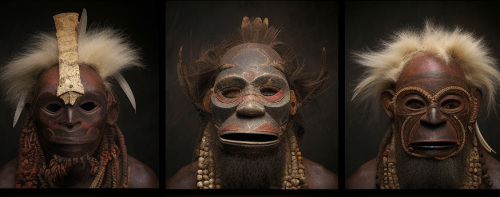 Lulua is an umbrella term which refers to a large number of peoples who populate the region near the Lulua River. It is in the Congo basin situated in the Democratic Republic of Congo. The people number 300,000 and live in small regional chiefdoms and in times of crisis elect a common leader. The role of the village chief is to insure juridical, political and social cohesion.
Lulua is an umbrella term which refers to a large number of peoples who populate the region near the Lulua River. It is in the Congo basin situated in the Democratic Republic of Congo. The people number 300,000 and live in small regional chiefdoms and in times of crisis elect a common leader. The role of the village chief is to insure juridical, political and social cohesion.
The heterogeneous composition of the people and the considerable area they occupy, explain the many stylistic overlappings with their neighbors. The formal and functional diversity of the masks testifies to the region as an ethnic crossroads and sometimes makes it difficult to confirm their origin.
One can distinguish at least two categories of wooden Lulua masks. The first group consists of face masks with concave eye-sockets and intricate geometric painted patterns; the second consists of face masks with concave eye-sockets, simpler patterns, and plank-shaped crest. Lulua masks with their pointed nose and deep eye-sockets were probably used during circumcision and funeral ceremonies.
This mask has a large number of little holes in the eye-sockets. On some similar masks there are fake holes with just two big ones for the usable eye holes. The holes in the face do not go through and are there for an extra dramatic effect. The mask you see here is my favorite of all the Lulua groups.





